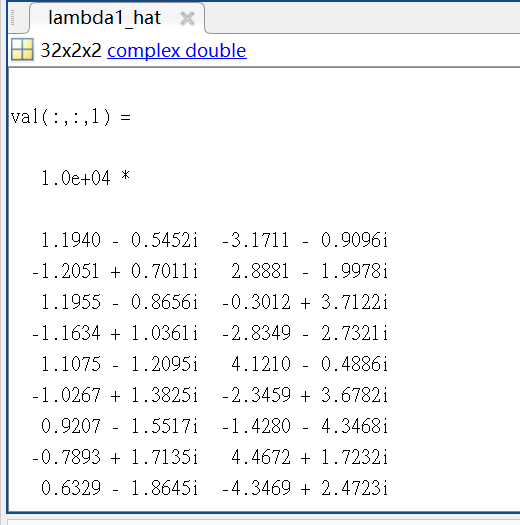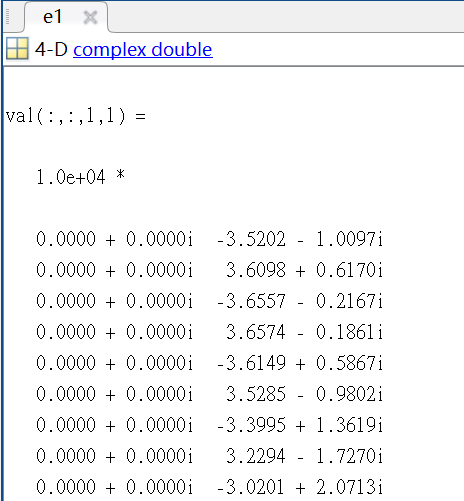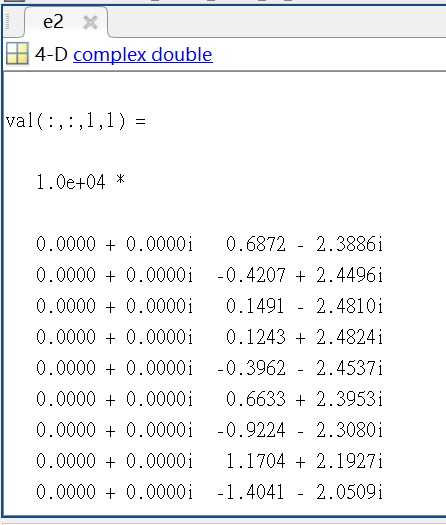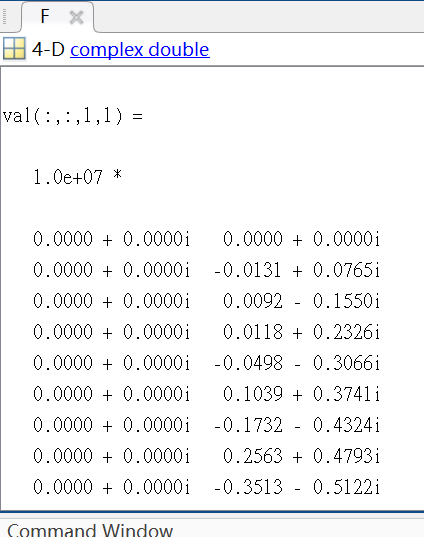Hi,
I’m solving a CVX SDP problem, but it gives me infeasible solutions.
I’m sure that the problem is convex, and I have tried mosek,sedumi, sdpt3 and none of them works.
I know that the scaling is bad, I’ve tried to scale the value back to magnitude=1 but the solution is still infeasible, and I’m afraid that the scaling might make the problem another problem instead of the original problem.
Is there any advice that I can tried to solve thi problem ? I really appreciate it !
The details of my code is listed below, thanks for the help !
%%
clc;clear all;
%Initialization
%RSU location, transmit and receive antenna,P=30dBm
M=2;
RSU=[-30,30;30,30];
Nt=32;
Nr=32;
d=1/2; %antenna spacing distance
P=10^(30/10)10^-3; %power=30dBm
%Vehicle location , single antenna
K=2;
CAR=[-5,0;15,0];
%Sample (for estimation)
fc=110^9;
delta_f=0.110^9;
T=1/delta_f;
L=32;
Ts=T/L;
% CRLB Performance
gamma1=0.01;
gamma2=0.01;
% Outage Probability
eps1=0.05;
eps2=0.05;
%Parameter Initialization
c=310^10; %speed of light
rho=10+101i; %fading coefficient
SNR=25;
%sigma=sqrt((10^((0-SNR)/10))*10^(-3));
sigma_c=0.001;
sigma_r=0.0001;
%Radar and Signal Model Initialization
%% Input Estimated Paremeter
filename = [‘estimation_2RSU_2CAR’,‘.mat’];
load(['C:\Users\CCRG613\Desktop\CCRG\Working\RSU_ISAC\Work_Hard\2RSU_2CAR\Robust_beamforming\Estimation_Parameter',filename],‘AoA_estimated’,‘dis_estimated’,‘speed’);
ang_estimated=AoA_estimated;
%Reflection coeffcient & Delay
beta=zeros(M,K,M); %reflection coefficent
mu=zeros(M,K,M); %doppler frequency
beta_tilde=zeros(M,K,M);
for m=1:M
for k=1:K
for mm=1:M
beta(m,k,mm)=rho/(dis_estimated(m,k)+dis_estimated(mm,k));
mu(m,k,mm)=speed(k)*cos(ang_estimated(m,k))*fc/c+speed(k)cos(ang_estimated(mm,k))fc/c;
beta_tilde(m,k,mm)=beta(m,k,mm)exp(1i2pimu(m,k,mm)*Ts);
end
end
end
%% Robust Beamforming (Sum Rate)
h_CSI_hat=zeros(Nt,M,K);
zeta=2; %Path loss exponent
d_r=1;
for m=1:M
for k=1:K
h_CSI_hat(:,m,k)=sqrt(Nt/L)(dis_estimated(m,k)/d_r)^(-zeta)((1/sqrt(Nt))exp(-1i(0:Nt-1)'2pidcos(ang_estimated(m,k))));
end
end
C=zeros(Nt,M,K);
e=zeros(Nt,m,k);
a_par=zeros(Nt,M,K);
for m=1:M
for k=1:K
for nt=1:Nt
a_par(nt,m,k)=((1/sqrt(Nt))1i(nt-1)‘2pidsin(ang_estimated(m,k))exp(-1i(nt-1)‘2pidcos(ang_estimated(m,k))));
end
C(:,m,k)=sqrt(Nt/L)(dis_estimated(m,k)/d_r)^(-zeta)10^(-2)a_par(:,m,k);
e(:,m,k)=sqrt(Nt/L)10d_r^(zeta)(-zeta)dis_estimated(m,k)^(-zeta-1)((1/sqrt(Nt))exp(-1i(0:Nt-1)'2pidcos(ang_estimated(m,k))));
end
end
Sigma1=zeros(Nt,Nt,M,K);
for m=1:M
for k=1:K
Sigma1(:,:,m,k)=C(:,m,k)*C(:,m,k)’*gamma1+e(:,m,k)*e(:,m,k)’*gamma2;
end
end
%% Robust Beamforming (CRLB)
% Angle CRLB
q=zeros(M,K);
for m=1:M
for k=1:K
q(m,k)=1ipisin(ang_estimated(m,k));
end
end
u1=zeros(Nr,Nt,M,K);
u1_par=zeros(Nr,Nt,M,K);
u2=zeros(Nr,Nt,M,K,M);
u2_par_m=zeros(Nr,Nt,M,K,M);
u2_par_mprime=zeros(Nr,Nt,M,K,M);
b=zeros(Nr,1);
a=zeros(Nt,1);
for nr=1:Nr
b(nr)=nr-1;
for nt=1:Nt
a(nt)=nt-1;
for m=1:M
for k=1:K
u1(nr,nt,m,k)=(b(nr)+a(nt))exp(-1ipi*(b(nr)+a(nt))cos(ang_estimated(m,k)));
u1_par(nr,nt,m,k)=(b(nr)+a(nt))^2exp(-1ipi(b(nr)+a(nt))cos(ang_estimated(m,k)));
end
for mm=1:M
if mm ~= m
for k=1:K
u2(nr,nt,m,k,mm)=(b(nr))exp(-1ipi(b(nr)cos(ang_estimated(m,k))+a(nt)cos(ang_estimated(mm,k))));
u2_par_m(nr,nt,m,k,mm)=(b(nr))^2exp(-1ipi*(b(nr)*cos(ang_estimated(m,k))+a(nt)*cos(ang_estimated(mm,k))));
u2_par_mprime(nr,nt,m,k,mm)=(b(nr)a(nt))exp(-1ipi(b(nr)*cos(ang_estimated(m,k))+a(nt)*cos(ang_estimated(mm,k))));
end
end
end
end
end
end
lambda1_hat=zeros(Nt,M,K);
lambda1_hat_temp=zeros(Nt,M,K);
lambda2_hat=zeros(Nt,M,K,M);
lambda2_hat_temp=zeros(Nt,M,K,M);
for m=1:M
for k=1:K
for nr=1:Nr
lambda1_hat_temp(:,m,k)=u1(nr,:,m,k)‘+lambda1_hat_temp(:,m,k);
end
lambda1_hat(:,m,k)=(sqrt(2)/sigma_r)*q(m,k)*beta_tilde(m,k,m)*lambda1_hat_temp(:,m,k);
end
for mm=1:M
if mm~=m
for k=1:K
for nr=1:Nr
lambda2_hat_temp(:,m,k,mm)=u2(nr,:,m,k,mm)’+lambda2_hat_temp(:,m,k,mm);
end
lambda2_hat(:,m,k,mm)=(sqrt(2)/sigma_r)*q(m,k)*beta_tilde(m,k,mm)*lambda2_hat_temp(:,m,k,mm);
end
end
end
end
d1=zeros(Nt,M,K);
d1_temp=zeros(Nt,M,K);
d2=zeros(Nt,M,K);
d2_temp=zeros(Nt,M,K);
D=zeros(Nt,M,K);
Sigma2=zeros(Nt,Nt,M,K);
for m=1:M
for k=1:K
for nr=1:Nr
d1_temp(:,m,k)=u1(nr,:,m,k)‘+d1_temp(:,m,k);
d2_temp(:,m,k)=u1_par(nr,:,m,k)’+d2_temp(:,m,k);
end
d1(:,m,k)=(sqrt(2)/sigma_r)(1ipi*cos(ang_estimated(m,k)))*beta_tilde(m,k,m)*d1_temp(:,m,k);
d2(:,m,k)=(sqrt(2)/sigma_r)q(m,k)^2beta_tilde(m,k,m)*10^(-2)*d2_temp(:,m,k);
D(:,m,k)=d1(:,m,k)+d2(:,m,k);
Sigma2(:,:,m,k)=D(:,m,k)*D(:,m,k)'*gamma1;
end
end
e1=zeros(Nt,M,K,M);
e1_temp=zeros(Nt,M,K,M);
e2=zeros(Nt,M,K,M);
e2_temp=zeros(Nt,M,K,M);
E=zeros(Nt,M,K,M);
F=zeros(Nt,M,K,M);
F_temp=zeros(Nt,M,K,M);
Sigma3=zeros(Nt,Nt,M,K,M);
for m=1:M
for k=1:K
for mm=1:M
if mm ~= m
for nr=1:Nr
e1_temp(:,m,k,mm)=u2(nr,:,m,k,mm)‘+e1_temp(:,m,k,mm);
e2_temp(:,m,k,mm)=u2_par_m(nr,:,m,k,mm)’+e2_temp(:,m,k,mm);
F_temp(:,m,k,mm)=u2_par_mprime(nr,:,m,k,mm)'+F_temp(:,m,k,mm);
end
e1(:,m,k,mm)=(sqrt(2)/sigma_r)(1ipicos(ang_estimated(m,k)))beta_tilde(m,k,mm)e1_temp(:,m,k,mm);
e2(:,m,k,mm)=(sqrt(2)/sigma_r)q(m,k)^2beta_tilde(m,k,mm)10^(-2)e2_temp(:,m,k,mm);
E(:,m,k,mm)=e1(:,m,k,mm)+e2(:,m,k,mm);
F(:,m,k,mm)=(sqrt(2)/sigma_r)q(m,k)^2beta_tilde(m,k,mm)10^(1)F_temp(:,m,k,mm);
Sigma3(:,:,m,k,mm)=(E(:,m,k,mm)E(:,m,k,mm)'+F(:,m,k,mm)F(:,m,k,mm)')gamma1;
end
end
end
end
% Distance CRLB
q2=1i2pi2/c;
q3=1i2pi/c;
u3=zeros(L,M,K);
u4=zeros(L,M,K,M);
u3_par=zeros(L,M,K);
u4_par=zeros(L,M,K,M);
f=zeros(L,1);
for l=1:L
f(l)=fc+(l-1)delta_f;
for m=1:M
for k=1:K
u3(l,m,k)=f(l)exp(1i2pif(l)(dis_estimated(m,k)+dis_estimated(m,k))/c);
u3_par(l,m,k)=f(l)^2exp(1i2pif(l)(dis_estimated(m,k)+dis_estimated(m,k))/c);
end
for mm=1:M
if mm~=m
for k=1:K
u4(l,m,k,mm)=f(l)exp(1i2pif(l)(dis_estimated(m,k)+dis_estimated(mm,k))/c);
u4_par(l,m,k,mm)=f(l)^2exp(1i2pif(l)(dis_estimated(m,k)+dis_estimated(mm,k))/c);
end
end
end
end
end
lambda3_hat=zeros(Nt,M,K);
lambda4_hat=zeros(Nt,M,K,M);
sum_u3=zeros(M,K);
sum_u4=zeros(M,K,M);
for m=1:M
for k=1:K
for l=1:L
sum_u3(m,k)=u3(l,m,k)+sum_u3(m,k);
end
lambda3_hat(:,m,k)=(sqrt(2)/sigma_r)q2beta_tilde(m,k,m)*sum_u3(m,k)*eye(Nt,1);
end
for mm=1:M
if mm~=m
for k=1:K
for l=1:L
sum_u4(m,k,mm)=u4(l,m,k,mm)+sum_u4(m,k,mm);
end
lambda4_hat(:,m,k,mm)=(sqrt(2)/sigma_r)q3beta_tilde(m,k,mm)*sum_u4(m,k,mm)*eye(Nt,1);
end
end
end
end
g=zeros(Nt,M,K);
sum_u3_par=zeros(M,K);
sum_u4_par=zeros(M,K,M);
I=zeros(Nt,M,K,M);
j=zeros(Nt,M,K,M);
Sigma4=zeros(Nt,Nt,M,K);
Sigma5=zeros(Nt,Nt,M,K,M);
for m=1:M
for k=1:K
for l=1:L
sum_u3_par(m,k)=u3_par(l,m,k)+sum_u3_par(m,k);
end
g(:,m,k)=(sqrt(2)/sigma_r)q2^2beta_tilde(m,k,m)*sum_u3_par(m,k)*eye(Nt,1);
Sigma4(:,:,m,k)=(g(:,m,k)*g(:,m,k)')*gamma2;
for mm=1:M
if mm ~= m
for l=1:L
sum_u4_par(m,k,mm)=u4_par(l,m,k,mm)+sum_u4_par(m,k,mm);
end
I(:,m,k,mm)=(sqrt(2)/sigma_r)*q3^2*beta_tilde(m,k,mm)*sum_u4_par(m,k,mm)*eye(Nt,1);
j(:,m,k,mm)=(sqrt(2)/sigma_r)*q3^2*beta_tilde(m,k,mm)*sum_u4_par(m,k,mm)*eye(Nt,1);
Sigma5(:,:,m,k,mm)=(I(:,m,k,mm)*I(:,m,k,mm)'+j(:,m,k,mm)*j(:,m,k,mm)')*gamma2;
end
end
end
end
%% Proposed Algorithm
% Initial [Rl,Ru]
Rate_low=0.5ones(K,1);
Rate_up=1ones(K,1);
Rate_all_low=0;
Rate_all_up=0;
for k=1:K
for l=1:L
Rate_all_low=Rate_low(k)+Rate_all_low;
Rate_all_up=Rate_up(k)+Rate_all_up;
end
end
% Start iteration
count_ite=0;
%while abs(Rate_all_up-Rate_all_low) >= 10^(-4)
count_ite=count_ite+1;
Rate_mid=(Rate_low+Rate_up)/2;
% Start Solving Problem
cvx_solver mosek %mosek%sedumi;%sdpt3;
cvx_begin SDP
variable W_opt(Nt,Nt,M,K) nonnegative symmetric
variable x1(K,1)
variable y1(K,1)
variable x2(M,K)
variable y2(M,K)
variable x3(M,K)
variable y3(M,K)
Q1=cvx(zeros(Nt,Nt,K));
u11=cvx(zeros(Nt,K));
s1=cvx(zeros(K,1));
Q1_temp1=cvx(zeros(Nt,Nt,M,K));
Q1_temp2=cvx(zeros(Nt,Nt,M,K));
vec_Q1=cvx(zeros(Nt^2,K));
norm_Q1_u1=cvx(zeros(Nt^2+Nt,K));
Q2=cvx(zeros(Nt,Nt,M,K));
Q2_temp=cvx(zeros(Nt,Nt,M,K));
u22=cvx(zeros(Nt,M,K));
u22_temp=cvx(zeros(Nt,M,K));
s2=cvx(zeros(M,K));
s2_temp=cvx(zeros(M,K));
vec_Q2=cvx(zeros(Nt^2,M,K));
norm_Q2_u2=cvx(zeros(Nt^2+Nt,M,K));
Q3=cvx(zeros(Nt,Nt,M,K));
Q3_temp=cvx(zeros(Nt,Nt,M,K));
u33=cvx(zeros(Nt,M,K));
u33_temp=cvx(zeros(Nt,M,K));
s3=cvx(zeros(M,K));
s3_temp=cvx(zeros(M,K));
vec_Q3=cvx(zeros(Nt^2,M,K));
norm_Q3_u3=cvx(zeros(Nt^2+Nt,M,K));
P_opt=cvx(zeros(M,1));
for k=1:K
for m=1:M
for i =1: k
if i~=k
Q1_temp1(:,:,m,k)=W_opt(:,:,m,i)+Q1_temp1(:,:,m,k);
end
end
Q1_temp2(:,:,m,k)=(1/(2^(Rate_mid(k,1))-1))*W_opt(:,:,m,k)-Q1_temp1(:,:,m,k);
Q1(:,:,k)=Sigma1(:,:,m,k)^(1/2)*Q1_temp2(:,:,m,k)*Sigma1(:,:,m,k)^(1/2)+Q1(:,:,k);
Q1(:,:,k)=0.5*(Q1(:,:,k)+Q1(:,:,k)');
u11(:,k)=Sigma1(:,:,m,k)^(1/2)*Q1_temp2(:,:,m,k)*h_CSI_hat(:,m,k)+u11(:,k);
s1(k)=h_CSI_hat(:,m,k)'*Q1_temp2(:,:,m,k)*h_CSI_hat(:,m,k)+s1(k);
end
s1(k)=s1(k)-sigma_c^2;
vec_Q1(:,k)=reshape(Q1(:,:,k)',1,[]);
norm_Q1_u1(1:Nt^2,k)=vec_Q1(:,k);
norm_Q1_u1(Nt^2+1:Nt^2+Nt,k)=sqrt(2)*u11(:,k);
end
for m=1:M
for k=1:K
for mm=1:M
if mm~=m
Q2_temp(:,:,m,k)=Sigma3(:,:,m,k,mm)^(1/2)*W_opt(:,:,mm,k)*Sigma3(:,:,m,k,mm)^(1/2)+Q2_temp(:,:,m,k);
u22_temp(:,m,k)=Sigma3(:,:,m,k,mm)^(1/2)*W_opt(:,:,mm,k)*lambda2_hat(:,m,k,mm)+u22_temp(:,m,k);
s2_temp(m,k)=lambda2_hat(:,m,k,mm)'*W_opt(:,:,mm,k)*lambda2_hat(:,m,k,mm)+s2_temp(m,k);
Q3_temp(:,:,m,k)=Sigma5(:,:,m,k,mm)^(1/2)*W_opt(:,:,mm,k)*Sigma5(:,:,m,k,mm)^(1/2)+Q3_temp(:,:,m,k);
u33_temp(:,m,k)=Sigma5(:,:,m,k,mm)^(1/2)*W_opt(:,:,mm,k)*lambda4_hat(:,m,k,mm)+u33_temp(:,m,k);
s3_temp(m,k)=lambda4_hat(:,m,k,mm)'*W_opt(:,:,mm,k)*lambda4_hat(:,m,k,mm)+s3_temp(m,k);
end
end
Q2(:,:,m,k)=Sigma2(:,:,m,k)^(1/2)*W_opt(:,:,m,k)*Sigma2(:,:,m,k)^(1/2)+Q2_temp(:,:,m,k);
Q2(:,:,m,k)=0.5*(Q2(:,:,m,k)+Q2(:,:,m,k)');
u22(:,m,k)=Sigma2(:,:,m,k)^(1/2)*W_opt(:,:,m,k)*lambda1_hat(:,m,k)+u22_temp(:,m,k);
s2(m,k)=lambda1_hat(:,m,k)'*W_opt(:,:,m,k)*lambda1_hat(:,m,k)+s2_temp(m,k)-1/gamma1;
Q3(:,:,m,k)=Sigma4(:,:,m,k)^(1/2)*W_opt(:,:,m,k)*Sigma4(:,:,m,k)^(1/2)+Q3_temp(:,:,m,k);
Q3(:,:,m,k)=0.5*(Q3(:,:,m,k)+Q3(:,:,m,k)');
u33(:,m,k)=Sigma4(:,:,m,k)^(1/2)*W_opt(:,:,m,k)*lambda3_hat(:,m,k)+u33_temp(:,m,k);
s3(m,k)=lambda3_hat(:,m,k)'*W_opt(:,:,m,k)*lambda3_hat(:,m,k)+s3_temp(m,k)-1/gamma2;
vec_Q2(:,m,k)=reshape(Q2(:,:,m,k)',1,[]);
norm_Q2_u2(1:Nt^2,m,k)=vec_Q2(:,m,k);
norm_Q2_u2(Nt^2+1:Nt^2+Nt,m,k)=sqrt(2)*u22(:,m,k);
vec_Q3(:,m,k)=reshape(Q3(:,:,m,k)',1,[]);
norm_Q3_u3(1:Nt^2,m,k)=vec_Q3(:,m,k);
norm_Q3_u3(Nt^2+1:Nt^2+Nt,m,k)=sqrt(2)*u33(:,m,k);
end
end
for m=1:M
for k=1:K
P_opt(m)=real(trace(W_opt(:,:,m,k)))+P_opt(m);
end
end
minimize sum(P_opt)
subject to
for k=1:K
% Constraint
(real(trace(Q1(:,:,k))-sqrt(-2*log(eps1))*x1(k)+log(eps1)*y1(k)+s1(k))) >=0 ;
(imag(trace(Q1(:,:,k))-sqrt(-2*log(eps1))*x1(k)+log(eps1)*y1(k)+s1(k))) >=0 ;
(norm(norm_Q1_u1(:,k))-x1(k))<= 0;
(y1(k)*eye(Nt)+Q1(:,:,k)) >= 0 ;
(y1(k)) >=0 ;
end
for m=1:M
for k=1:K
real(trace(Q2(:,:,m,k))-sqrt(-2*log(eps2))*x2(m,k)+log(eps2)*y2(m,k)+s2(m,k)) >=0 ;
imag(trace(Q2(:,:,m,k))-sqrt(-2*log(eps2))*x2(m,k)+log(eps2)*y2(m,k)+s2(m,k)) >=0 ;
(norm(norm_Q2_u2(:,m,k)) - x2(m,k))<=0;
(y2(m,k)*eye(Nt)+Q2(:,:,m,k)) >= 0 ;
(y2(m,k)) >=0 ;
(real(trace(Q3(:,:,m,k))-sqrt(-2*log(eps2))*x3(m,k)+log(eps2)*y3(m,k)+s3(m,k))) >=0 ;
(imag(trace(Q3(:,:,m,k))-sqrt(-2*log(eps2))*x3(m,k)+log(eps2)*y3(m,k)+s3(m,k))) >=0 ;
(norm(norm_Q3_u3(:,m,k)) - x3(m,k) )<=0;
(y3(m,k)*eye(Nt)+Q3(:,:,m,k)) >= 0 ;
(y3(m,k)) >=0 ;
end
end
cvx_end
temp_P=zeros(M,1);
Power_check=zeros(M,1);
for m=1:M
for k=1:K
temp_P(m)=trace(W_opt(:,:,m,k))+temp_P(m);
end
if temp_P(m)<=P
Power_check(m)=1;
else
Power_check(m)=0;
end
end
disp('iteration')
disp(count_ite)
% Check Feasibility
%if isnan(mean(temp_P)) == 1
if strfind(cvx_status,'Infeasible') == 1
disp('Not Feasible')
Rate_up=Rate_mid;
else
if sum(Power_check) == M
disp('Feasible')
Rate_low=Rate_mid;
else
disp('Over Power')
Rate_up=Rate_mid;
end
end
Rate_all_low=0;
Rate_all_up=0;
for k=1:K
for l=1:L
Rate_all_low=Rate_low(k)+Rate_all_low;
Rate_all_up=Rate_up(k)+Rate_all_up;
end
end
%end
%% The value that I’ve tried to scale.
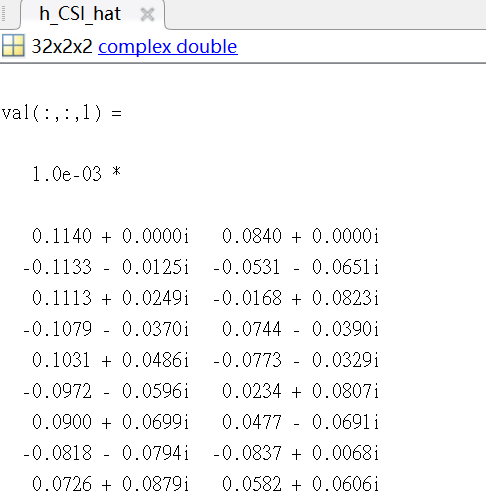


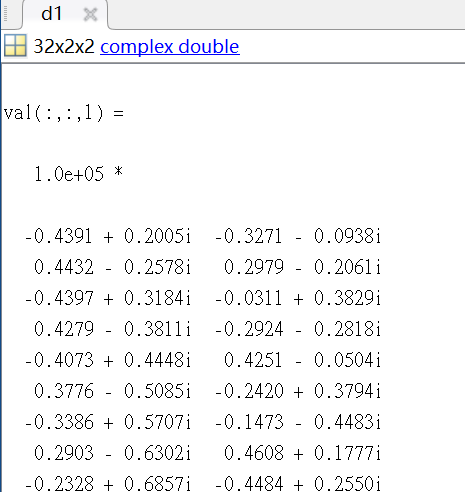
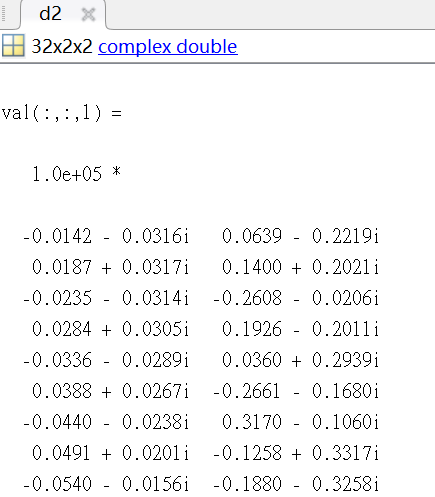
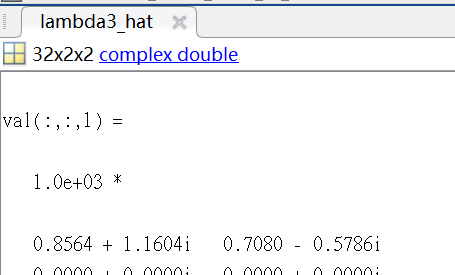
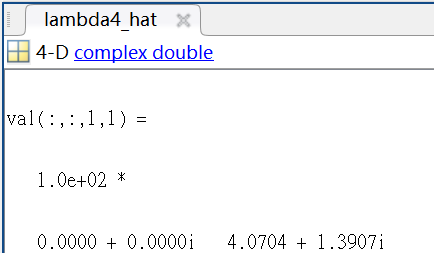

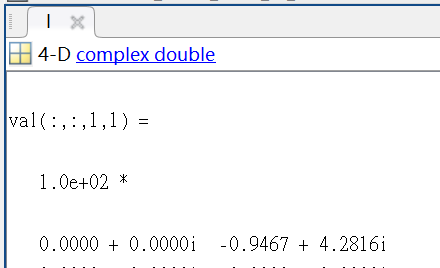

%% Result of Mosek
Problem
Name :
Objective sense : min
Type : CONIC (conic optimization problem)
Constraints : 2136
Cones : 8
Scalar variables : 7478
Matrix variables : 8
Integer variables : 0
Optimizer started.
Presolve started.
Linear dependency checker started.
Linear dependency checker terminated.
Eliminator started.
Freed constraints in eliminator : 0
Eliminator terminated.
Eliminator - tries : 1 time : 0.00
Lin. dep. - tries : 1 time : 0.05
Lin. dep. - number : 0
Presolve terminated. Time: 0.53
Problem
Name :
Objective sense : min
Type : CONIC (conic optimization problem)
Constraints : 2136
Cones : 8
Scalar variables : 7478
Matrix variables : 8
Integer variables : 0
Optimizer - threads : 6
Optimizer - solved problem : the primal
Optimizer - Constraints : 2120
Optimizer - Cones : 8
Optimizer - Scalar variables : 7338 conic : 7326
Optimizer - Semi-definite variables: 8 scalarized : 10432
Factor - setup time : 5.17 dense det. time : 0.00
Factor - ML order time : 0.05 GP order time : 0.00
Factor - nonzeros before factor : 1.12e+06 after factor : 1.12e+06
Factor - dense dim. : 0 flops : 1.81e+10
ITE PFEAS DFEAS GFEAS PRSTATUS POBJ DOBJ MU TIME
0 3.1e+01 4.2e+01 3.3e+02 0.00e+00 -3.268311861e+02 0.000000000e+00 1.0e+00 7.16
1 3.6e+00 4.8e+00 1.5e+02 -1.09e+00 -5.403129854e+02 2.050729865e-05 1.1e-01 26.70
2 1.0e+00 1.4e+00 4.3e+02 -2.24e+00 -4.605145602e+03 -5.359697693e-04 3.3e-02 37.11
3 7.7e-01 1.0e+00 3.9e+02 -4.58e+00 -4.098926852e+03 -1.056707955e-03 2.5e-02 47.34
4 4.4e-01 5.8e-01 1.1e+02 -4.55e-01 -1.411272432e+03 -1.704420428e-03 1.4e-02 57.25
5 2.0e-02 2.7e-02 2.4e+00 8.59e-02 -1.841092167e+02 -3.792939041e-03 6.6e-04 67.75
6 1.4e-04 1.8e-04 1.4e-03 9.73e-01 -1.433663368e+00 -3.919572273e-03 4.5e-06 78.25
7 7.0e-05 9.4e-05 5.2e-04 1.01e+00 -7.229605701e-01 -3.993044100e-03 2.3e-06 88.81
8 4.8e-05 6.5e-05 3.1e-04 9.99e-01 -5.464629915e-01 -3.719505854e-03 1.9e-06 99.16
9 2.3e-05 3.1e-05 1.1e-04 5.94e-01 -3.147652787e-01 -4.004794893e-03 9.3e-07 109.50
10 1.8e-05 2.4e-05 7.9e-05 6.59e-01 -2.588036412e-01 -4.207884687e-03 7.4e-07 119.78
11 1.4e-05 1.8e-05 4.9e-05 7.97e-01 -1.797161444e-01 -4.043708261e-03 5.9e-07 130.28
12 7.5e-06 1.0e-05 2.3e-05 3.87e-01 -1.290227220e-01 -4.628552345e-03 3.3e-07 141.16
13 6.9e-06 9.2e-06 2.0e-05 3.60e-01 -1.211408340e-01 -4.684624968e-03 3.1e-07 152.45
14 4.5e-06 6.0e-06 1.2e-05 6.09e-01 -9.055986237e-02 -4.933807470e-03 2.2e-07 163.09
15 3.8e-06 5.1e-06 8.8e-06 6.62e-01 -7.539312618e-02 -4.866138767e-03 1.9e-07 174.55
16 2.4e-06 3.3e-06 5.5e-06 2.39e-01 -6.952780650e-02 -5.744920705e-03 1.3e-07 186.45
17 1.7e-06 2.3e-06 3.4e-06 3.74e-01 -5.357948920e-02 -5.833588259e-03 9.0e-08 197.75
18 1.7e-06 2.3e-06 3.4e-06 1.57e+00 -5.357948920e-02 -5.833588259e-03 9.0e-08 208.30
19 1.7e-06 2.3e-06 3.4e-06 4.14e+00 -5.357948920e-02 -5.833588259e-03 9.0e-08 219.38
Optimizer terminated. Time: 230.36
Interior-point solution summary
Problem status : ILL_POSED
Solution status : PRIMAL_ILLPOSED_CER
Dual. obj: -8.0365732125e-06 nrm: 1e+02 Viol. con: 0e+00 var: 6e-02 barvar: 3e-08 cones: 0e+00
Optimizer summary
Optimizer - time: 230.36
Interior-point - iterations : 20 time: 230.33
Basis identification - time: 0.00
Primal - iterations : 0 time: 0.00
Dual - iterations : 0 time: 0.00
Clean primal - iterations : 0 time: 0.00
Clean dual - iterations : 0 time: 0.00
Simplex - time: 0.00
Primal simplex - iterations : 0 time: 0.00
Dual simplex - iterations : 0 time: 0.00
Mixed integer - relaxations: 0 time: 0.00
Status: Failed
Optimal value (cvx_optval): NaN
Thanks for the help !
